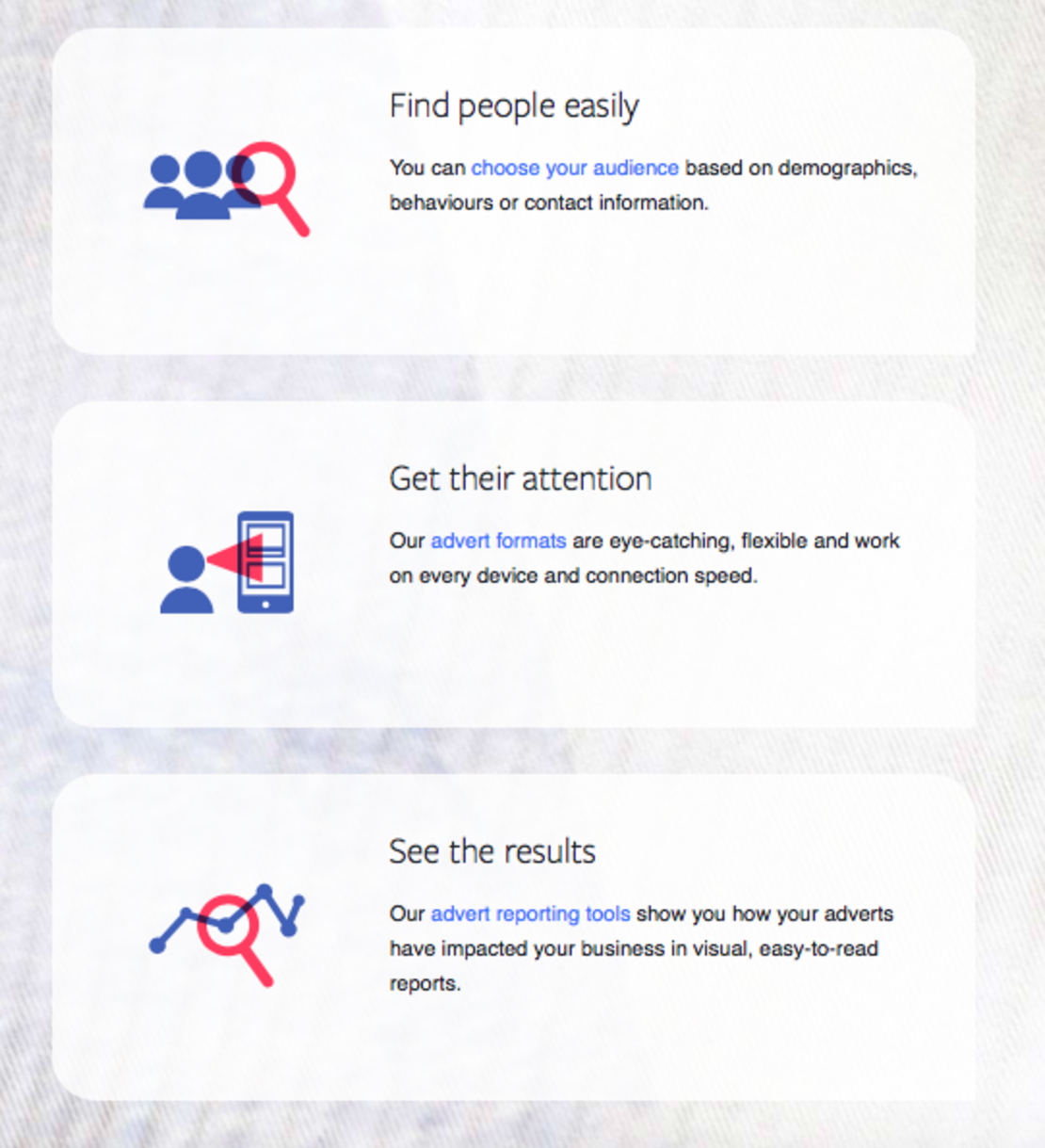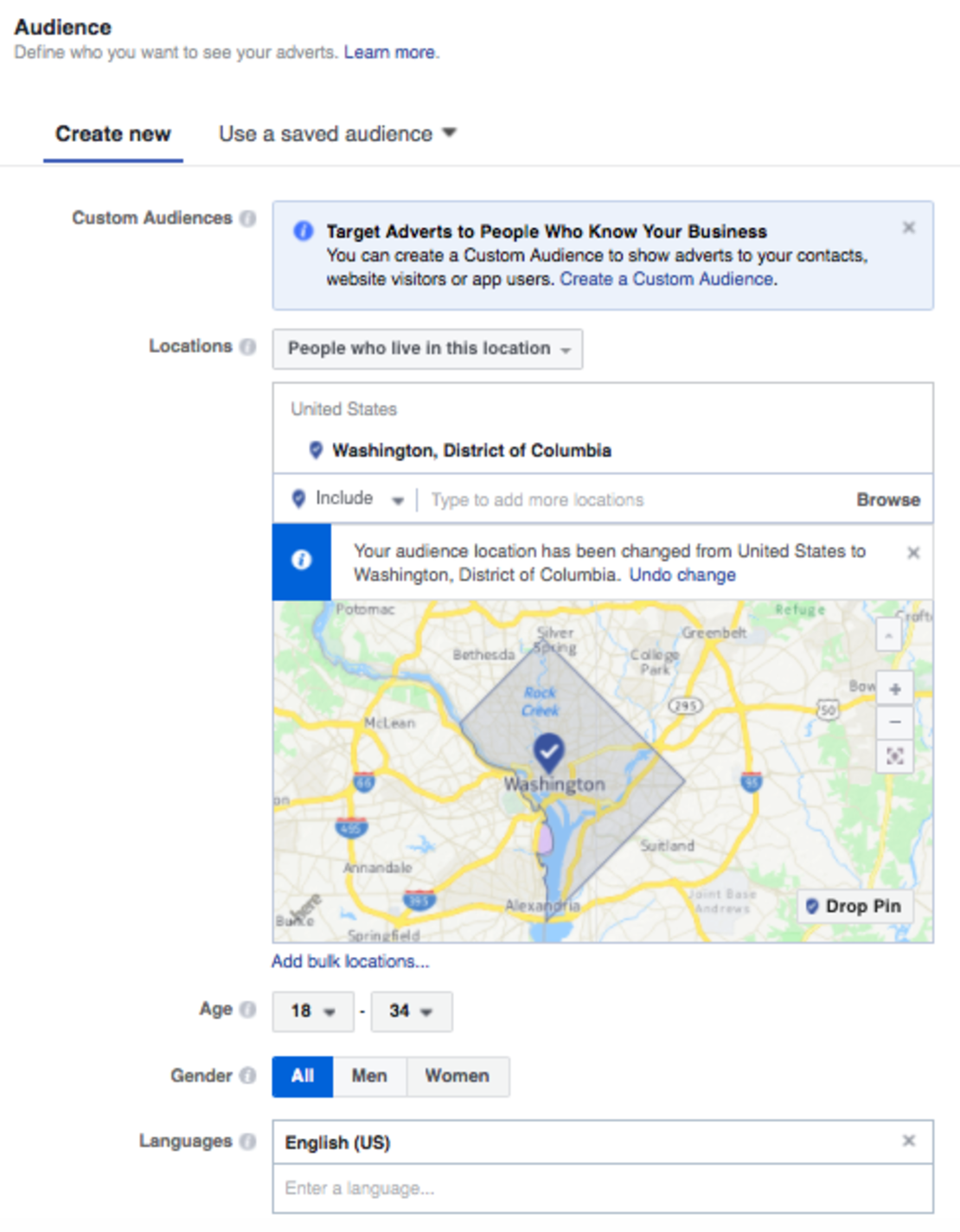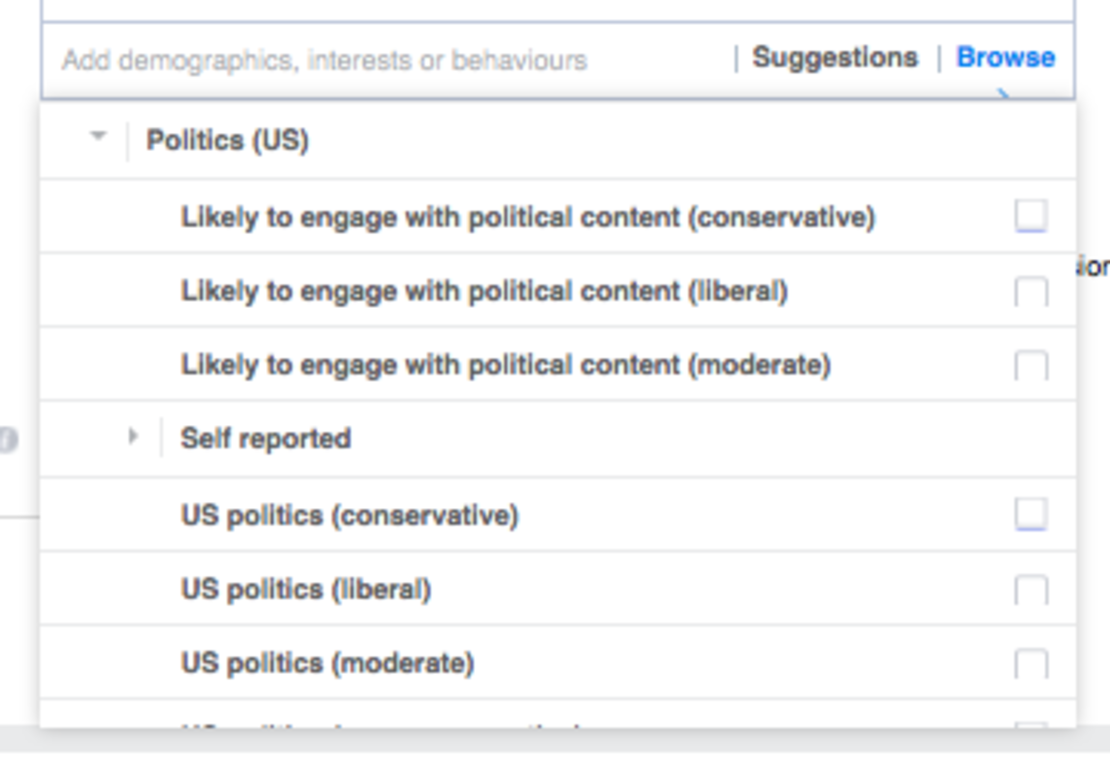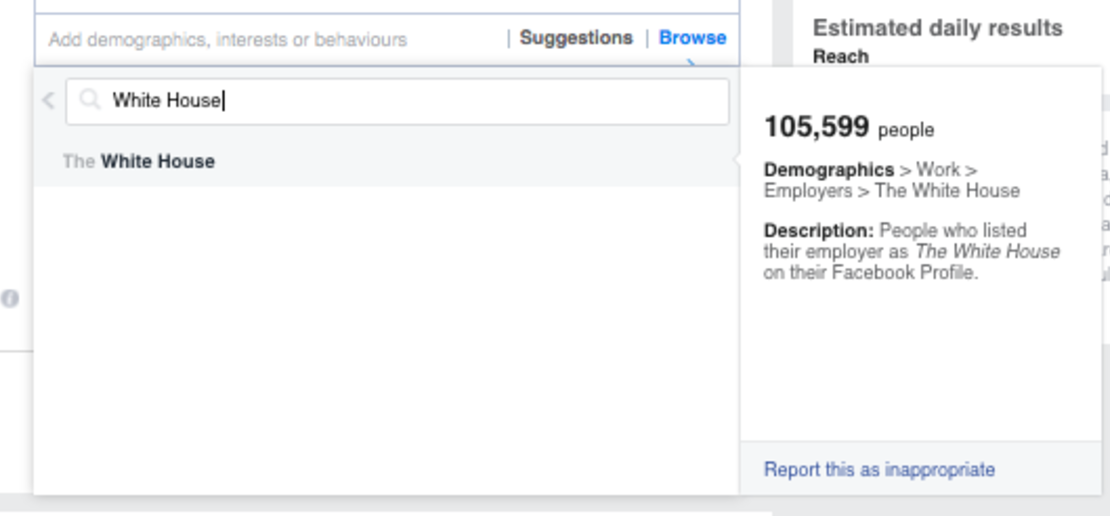The politically divisive Facebook ads bought during the 2016 campaign by the Russia-connected “troll farm” known as the Internet Research Agency were purchased through the social media network’s self-service ad manager platform.
These ads focused on topics like LGBT issues, immigration and gun rights, according to Facebook’s chief security officer Alex Stamos, and sources told CNN at least one referenced Black Lives Matter and targeted audiences in Ferguson, Missouri and Baltimore.
This is how easy it is today to buy ads on the platform and target specific groups of people.
A landing page about advertising on Facebook touts it as a way to “find people easily,” “get their attention” and “see the results,” which sounds pretty benign if you’re thinking about small businesses targeting customers who’d be most interested in their products – but utterly terrifying if you’re thinking of a foreign power seeking to sow political discord in a rival country.

Facebook first asks users for their marketing objectives for their ads, either awareness, consideration or conversion. I clicked “conversion” and made a campaign to promote subscriptions to the COVER/LINE newsletter I co-write. You can then determine what audience you want to reach by geography, age and gender. I selected men and women ages 18 to 34 who live in Washington and speak English.

Users can then select more detailed targeting. You can select based on generation, household composition and interests, all prefaced on pages people like and information they’ve given Facebook and Instagram about themselves. I selected “young & hip” millennials interested in “trendy fashion.”

But wait, there’s more! Say you’re working for a Russian troll farm and you’re building a campaign targeting, say, people with strong opinions about Black Lives Matter or same-sex marriage or gun rights. You can select people based on their politics – “likely to engage” with conservative, liberal or moderate political content, or how they self-identify politically – and combine that with other demographic information to reach your intended audience. I skipped that part, because COVER/LINE is for everyone, no matter who they voted for.

You can also target people by where they say they work. I selected people who work at the White House. Based on the criteria I selected, my ads reach an audience of fewer than 1,000 people. That’s what I call micro-targeting.

Facebook CEO Mark Zuckerberg said last week the company would make political advertising more transparent. In 2011, it sought an exception on the required disclaimers on political ads because of space constraints.



